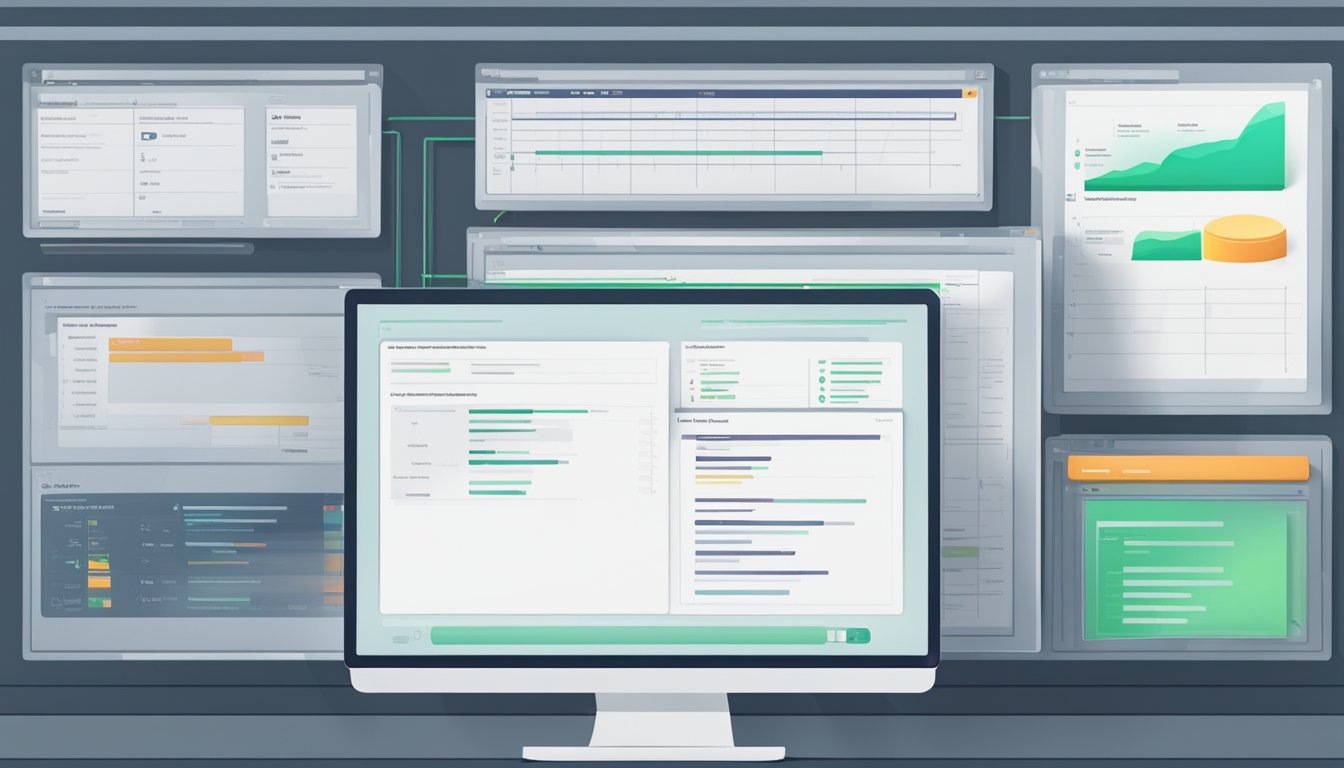Testing is so important for any software company like Zillexit. As developers, we pour our hearts into building products that make life easier for people. But it doesn’t matter how skilled we are or how much passion we have – if our software isn’t properly tested, it runs the risk of bugs, crashes, and bad experiences for customers.
That’s why we take testing so seriously here. Before anything gets released, it goes through rigorous validation to make sure it works how it should across different devices and environments. Our testers pound on it from every angle to uncover defects, so we can fix them before real humans encounter issues. It’s not the most glamorous job, but so crucial for ensuring a smooth user experience once the software is out in the wild.
Of course, testing is also a learning process for us. The bugs our QA team finds help us develop an even better understanding of how people use our products and where improvements can still be made. Their feedback fuels ongoing enhancements to make each version more polished than the last. In the end, the time and effort put into testing translates directly into greater value and reliability for our customers.
So while development is what brings our ideas to life initially, testing is what readies them for prime time. It’s the final vetting that gives me confidence our software is stable, secure and ready to genuinely solve problems when users need it most. That kind of quality is so important to our mission at Zillexit of empowering people through innovative technology.
What Is Application In Zillexit Software?
What Is Application In Zillexit Software? Zillexit is a powerful software platform that can help businesses in many different ways. At its core, it was designed to optimize operations and streamline processes. But it offers so much more beyond that.
Some of the main things organizations use Zillexit for include project management, resource allocation, and team collaboration. Being able to centralize all those critical aspects in one easy-to-use system is a huge plus. It gives leadership real-time visibility into how projects are progressing. And it makes it simpler for teams to communicate, share files, track tasks, and work as one cohesive unit regardless of location.

In addition, Zillexit provides robust functionality for things like process automation, data management, and reporting & analytics. Having all that built right in means less time spent tediously moving between separate apps. Companies save money by consolidating into one integrated solution.
No matter the industry, Zillexit can streamline core functions and boost productivity. From planning and executing tasks to monitoring budgets and deadlines, it gives businesses the tools needed to run like a well-oiled machine. The user-friendly dashboard makes it easy for anyone to pick up and start putting Zillexit to work right away.
In the end, Zillexit is all about working smarter, not just harder. By centralizing disparate systems onto one platform, companies benefit from increased visibility, coordination, and efficiency across the board. It’s definitely worth a look if optimizing operations is a priority.
Enhancing Business Efficiency with Zillexit Software Integrations

In today’s fast-paced business environment, efficient operations and seamless collaboration are essential for growth and success. However, many organizations struggle due to disjointed systems and siloed data. This is where Zillexit excels – its powerful integrations help break down barriers by connecting critical business applications.
Whether your team uses Salesforce, Google Workspace, Microsoft Office, or other core programs, Zillexit provides pre-built connections to establish a unified workflow. With a centralized command center, users gain a holistic view of all data in one spot. They can access any information needed directly from Zillexit without switching between multiple logins.
For example, sales and marketing departments benefit from integrating CRM and email systems. Reps stay on top of leads and client requests in real-time. Automated notifications flag upcoming meetings or deadlines. Managers get a comprehensive activity snapshot to track performance.
Project managers likewise appreciate Zillexit unifying project management, file sharing, and communication tools. Teams seamlessly collaborate on documents from anywhere. Managers oversee progress with automated status updates synced from linked applications. Issues are quickly identified and resolved before delays occur.
Such integrations translate to significant efficiency gains. Employees save roughly two hours per week by eliminating redundant data entry or switching contexts. Organizations reduce overall tool costs by consolidating subscriptions. Automation also frees up an average of 30% more time to focus on strategic work.
Importance of Testing in Zillexit Software Development

Testing in Zillexit Software development is essential to identify and rectify any issues or bugs in the system. By conducting thorough testing at each stage of development, developers can ensure that the software functions correctly and meets the specified requirements. This proactive approach helps in enhancing the overall quality of the software and prevents any potential malfunctions or crashes in the future.
Types of Testing in Zillexit Software
Zillexit uses many kinds of testing. Each focuses on something different. Here are key types of testing Zillexit does:
- Unit Testing – Checks individual code parts work right. Verifies each function as developers write code.
- Integration Testing – Validates connections between code modules. Makes sure all pieces work together smoothly.
- Functional Testing – Confirms software works per specifications. Validates all features and user workflows.
- UI Testing – Tests the user interface looks and behaves as intended. Checks navigation and visual design.
- Security Testing – Identifies vulnerabilities hackers could exploit. Checks encryption, access rules, and more.
- Performance Testing – Verifies software responds fast under heavy load. Stresses the apps to find bottlenecks.
- Usability Testing – Evaluate how easy and intuitive apps are to use. Based on observing real users.
Each testing type has a purpose. Together they check all parts of Zillexit’s apps. Comprehensive testing ensures reliable, high-quality software.
The Testing Process in Zillexit Software Development
What Is Testing In Zillexit Software? The testing process in Zillexit software development follows a systematic approach to ensure thorough evaluation and validation of the software. It typically includes the following stages:
- Test Planning: This stage involves defining the scope, objectives, and resources required for testing Zillexit software. Test planning sets the foundation for the entire testing process.
- Test Execution: In this stage, the actual testing of Zillexit software takes place based on the test cases, scripts, and scenarios developed during the planning phase. Test execution aims to identify defects and ensure the software meets quality standards.
- Defect Tracking and Management: During testing, any defects or issues discovered in Zillexit software are logged, tracked, and managed effectively. Resolving these defects promptly is essential to maintain the software’s integrity.
Best Practices for Testing in Zillexit Software
- Automation: Implementing test automation for repetitive test cases can streamline the testing process and improve efficiency in testing Zillexit software.
- Continuous Testing: Embrace continuous testing practices to enable early bug detection and faster feedback cycles, ensuring high-quality releases of Zillexit software.
- Collaboration: Foster collaboration between development and testing teams to enhance communication, address issues promptly, and align on quality goals for Zillexit software.
Testing plays a pivotal role in ensuring the seamless deployment of Zillexit software. By employing effective testing strategies, such as functional, performance, and security testing, and following a structured testing process, developers can uphold the quality, reliability, and security standards of Zillexit software, ultimately enhancing user satisfaction and trust in the product.
Benefits of Testing in Zillexit Software

Finds Bugs Early When Cheaper to Fix
Thoroughly testing software functionality during development stages enables identifying defects and bugs while code is still being actively written by engineers. It is typically 5-10x cheaper to fix bugs during development compared to after launch. Finding and resolving issues early avoids cascading failures. Comprehensive test coverage confirms any defects are caught before code branches are merged. This prevents propagating bugs downstream. Fixing bugs early saves significant rework time and costs later.
Verifies All Features Work Right Before Release
Rigorously testing each new feature and functionality validates they work exactly to specification before the software gets officially released to customers. This crucially prevents defective features with issues from reaching end users where they could negatively impact productivity or experience. Testing provides assurance that all use cases and scenarios for features operate correctly across diverse data sets and platforms. Thorough testing of all features maintains high quality standards and reliability.
Ensures Software is High Quality and Reliable
Utilizing a wide array of test types and comprehensive test coverage ensures Zillexit software meets high standards of quality and reliability expected by enterprise customers for mission-critical systems. Rigorous validation of all components across operating conditions provides confidence the software is robust, stable, and secure enough for supporting sensitive data and transactions. Testing helps achieve resilient software that customers can trust to work as intended under all usage patterns.
Confirms Security Against Hackers is Robust
In-depth security testing thoroughly verifies encryption, access controls, penetration testing, and other protections are robust against hackers trying to steal data or breach systems. Validating security across various attack vectors and scenarios ensures customer data remains protected against unauthorized access. Security is crucial for maintaining customer trust in the software. Failing to confirm security risks data breaches.
Validates Smooth Integration Between Code Modules
Conducting extensive integration testing across the entire software stack confirms different code modules and components integrate together smoothly without issues. Testing rigorously verifies end-to-end transactions across integrated components function properly without errors, crashes, performance problems, or incorrect data hand-offs. Smooth integration between modules prevents defects from impacting customers.
Checks Performance is Fast Even With Heavy Usage
Executing load, stress and performance testing across a range of user scenarios validates the software stays responsive and fast even with many concurrent users, high data volumes, and peak usage conditions. Identifying and resolving bottlenecks during testing ensures smooth performance for customers under real-world conditions. Unchecked performance problems degrade user experience.
Makes Sure Interface is Intuitive and User-Friendly
Usability testing with real representative users across the spectrum ensures UIs, workflows, and interactions are intuitive, easy to navigate, and user-friendly. Testing identifies any complex interfaces or confusing elements that could inhibit user adoption and satisfaction. Optimizing simplicity and clarity in the interface promotes high productivity.
Reduces Future Maintenance Costs Down the Road
Delivering high-quality software with fewer latent defects results in less bug fixes and maintenance work required overtime after launch. Finding and fixing problems during testing avoids recurring issues and ongoing patchwork post-release. Well-tested software saves significant support costs by preventing avoidable problems before they negatively impact customers.
Prevents Defects Reaching Customers and Damaging Trust
Preventing buggy, defective software from getting deployed avoids detrimental impacts to customers, like application crashes, data corruption, calculation errors, and functional mistakes that disrupt operations. Customers expect flawless execution from trusted vendors. Rigorous testing protects their confidence in the software working properly.
Meets Compliance Requirements for Regulated Industries
Confirming through extensive validation testing that the software meets legal, regulatory, and compliance requirements for regulated sectors like financial services, healthcare, aviation, and pharmaceuticals. Verifying compliance prevents lawsuits, regulatory fines and other penalties for non-compliance. Unverified software risks sanctions.
Protects Zillexit Brand Reputation for Excellence
By thoroughly vetting software quality pre-release, Zillexit protects its brand reputation for only delivering the highest quality and most reliable enterprise solutions. Compromising on quality risks permanent damage to brand reputation. Rigorous testing maintains Zillexit’s standards of excellence that customers expect.
Builds Customer Confidence in Using Zillexit Software
Knowing the software is rigorously and transparently tested gives customers increased confidence to rely on Zillexit solutions for their most critical business systems and processes. Trust is earned by demonstrating quality practices. Thorough testing proves commitment to customers by preventing avoidable defects.
Enables Faster Delivery of New Capabilities
Comprehensive automated testing enables more frequent releases of high-quality updates to customers in shorter cycles by preventing regressions. Automated regression testing accelerates delivery of new features and innovations users want without compromising stability. Testing unlocks speed.
Testing is an indispensable part of Zillexit Software development that directly impacts its performance, reliability, and user satisfaction. By incorporating various types of testing throughout the development lifecycle, developers can ensure that Zillexit Software meets the highest standards of quality and functionality. Emphasizing testing not only enhances the software but also builds trust and credibility among users, establishing Zillexit Software as a robust and dependable solution in the market.

Best Practices for Quality Assurance in Software Development
Quality assurance in software development is a critical aspect that can make or break a product. Ensuring that software meets the desired quality standards is essential for providing a seamless user experience and avoiding costly errors down the line. By following best practices in quality assurance, software development teams can enhance the overall quality of their products and streamline the development process. Let’s explore some key strategies for effective quality assurance in software development.
Comprehensive Test Planning
Proper test planning is crucial for effective quality assurance. Test teams should carefully consider the product requirements, functionality, platforms, and other scope aspects to develop a comprehensive test plan. This plan should outline the test strategy, approach, responsibilities, and schedule. Test cases need to be mapped to requirements to ensure full coverage. Test plans provide structure and accountability for testing efforts.
Test Automation
Automating repetitive test cases streamlines quality assurance. Selenium and other tools help automate GUI, API, security, and cross-browser testing. This improves efficiency by running automated test suites regularly during development. It also increases test depth and coverage by running more cases more frequently. Test automation finds bugs early and tracks regression issues. The time savings allows manual testing to focus on complex scenarios.
Continuous Integration and Testing
Incorporating testing into every code change ensures quality from the beginning. With CI/CD pipelines, tests run automatically on each code change before code is merged. This providesinstant feedback to developers if code breaks tests. Issues are flagged immediately for quicker resolution. By testing continually throughout development, fewer bugs escape to later stages.
Bug Tracking and Reporting
Centralized tracking provides visibility into testing status and progress. A dedicated tool like Zillexit allows detailed bug logging with steps to reproduce, screenshots, severity, assignees, etc. This provides structure for the testing workflow. Customizable fields help categorize and prioritize bugs. Reporting features monitor resolved vs. open bugs to focus efforts.
Collaboration and Communication
Testing is a team effort requiring coordination. Regular stand-ups keep all teams aligned on progress, blockers and priorities. A communication portal shares testing documents, meeting notes, metrics dashboards, etc. Collaboration tools provide work/bug space for testing discussions. This unified approach yields a shared understanding and collective responsibility for quality.

Performance Testing
Performance testing is so important to ensure our software runs smoothly under any conditions. As our user base and usage grows over time, we need to know our creations can scale without issue.
Our testers put the system through rigorous simulations, from everyday average loads all the way up to intensive stress test levels. This really emulates real-world usage at any volume and exposes bottlenecks or hang-ups before customers encounter them.
Some key things we examine – how fast is page load time? Are searches completing swiftly? What is the response time for API calls? We meticulously analyze where things may be running slow due to code inefficiencies, complex queries slowing databases, or other resource hogs slowing the user experience.
Finding and fixing these kinds of performance problems early makes a huge difference. Customers should never have to wait around twiddling their thumbs waiting for the software to catch up!
Our testers also look at uptime reliability – simulating spikes, outages, even disasters to ensure the system remains robust and available. The last thing users want is glitches when traffic soars due to a new feature launch.
Overall, the scalability work we do through performance testing gives me peace of mind. I know that as our company and solutions grow, so does our ability to handle bigger and bigger loads without a hiccup. Response is king these days – we can’t leave performance to chance!
Security Testing
Security is so important, especially in today’s world where breaches seem to be constantly in the news. As a software company dealing with users’ personal and financial information, we take testing our security very seriously.
Our security team dedicates time to penetration testing, where they basically try to hack into our systems or find vulnerabilities the way a real bad actor would. It’s nerve-wracking to watch, but so valuable to find and patch holes before the bad guys do.
They pore over our code with fine-tooth combs too, checking for any flaws, backdoors or weaknesses that someone malicious could exploit. All of our access controls, authentication, encryption – everything gets thoroughly stress tested.
Of course, we also make sure our practices comply with stringent standards like PCI to keep data safe. Remediating any issues found through testing is top priority.
Overall it gives me peace of mind knowing we’ve made multiple passes to harden security. I’d never want our users’ trust betrayed due to a compromise we could have prevented. The consequences of a breach these days are just too high.
Security testing, while intense, is so worth it to protect our customers and our reputation. Their safety has to be the number one priority.
Implementing best practices in quality assurance is essential for delivering high-quality software that meets user expectations and business requirements. By incorporating comprehensive test planning, test automation, continuous testing, bug tracking, collaboration, performance testing, and security testing into the development process, teams can enhance the quality, reliability, and security of their software products. Prioritizing quality assurance from the outset leads to better outcomes, satisfied users, and a competitive edge in the market.
Importance of User Acceptance Testing in Software Implementation

User Acceptance Testing is such a crucial part of the software implementation process. As developers, we pour our hearts into building applications to solve real problems, but until the intended users give it a try, we haven’t truly validated our work.
UAT is valuable because it’s our opportunity to get feedback directly from the people who will be using the system day-to-day in real workflow scenarios. These testers tackle it just like they would once it’s deployed, and their perspectives are priceless.
When end-users flag issues with things like usability, performance in their environment, or inconsistencies with their expectations, it’s a wake-up call on areas we may have overlooked internally. We rely on UAT to catch these gaps before go-live.
It also helps build confidence – when users are involved throughout and we address the problems they surface, they feel heard and know we’re committed to meeting their needs. This buy-in makes post-launch adoption and support so much easier down the road.
Most importantly, with UAT we can be sure the system actually solves the core challenges it was designed for. There’s nothing worse than building something to find out it misses the mark for its intended purpose. User feedback prevents costly reworks post-deployment.
So while developing and testing internally is crucial, UAT closes the loop by verifying directly from those who matter most – the customers. Their validation is the stamp that we’re truly ready to roll out a solution they can rely on.
Let’s delve into the significance of User Acceptance Testing in software implementation:
Ensures Alignment with User Requirements
By involving the actual end users who provided the original requirements, UAT ensures there is no gap between what was intended and what was developed. Users can validate that core functionality, workflows, outputs and interfaces all meet the criteria. Any discrepancies are immediately apparent. This gives confidence that the final product will satisfy needs as designed.
Identifies Issues Early On
Rather than deploying internally-tested software and waiting for user-discovered bugs later, UAT proactively surfaces issues upfront. End users approach testing as they would real work, often revealing edge cases or misunderstood specs. When found early, these problems are cheaper and less disruptive to fix before going live. UAT also finds usability hurdles or pain points confusing to users. Addressing them smoothly readies users for a frictionless launch and adoption experience.
Enhances User Satisfaction
User satisfaction is critical for the long-term success of any software product. UAT plays a key role in guaranteeing end-users are content with the final implementation.
By getting users involved in testing, developers can gain direct insight into what aspects of the application users find intuitive and engaging versus confusing or inconvenient. This feedback pinpoints areas that may need simplification or additional support to streamline the user experience.
When issues and feedback from UAT are properly addressed before launch, it demonstrates to users that their perspectives were truly heard and accounted for throughout development. This generates goodwill and lays the foundation for a smooth post-launch period with high adoption rates.
Launching software that users perceive as seamlessly meeting their needs, thanks to UAT refinements, builds long-term loyalty and satisfaction. Users will be much more confident and trusting in the product’s ability to empower their tasks effectively.
Conversely, overlooking UAT feedback risks launching software that leaves users frustrated or lacking key expected capabilities. This undermines satisfaction and may impair potential for the software over time.
Overall, by constantly validating usability against users and applying valuable test insights, UAT plays a pivotal role in cementing high satisfaction with the final product implementation.
Minimizes Risks
User Acceptance Testing is a key process for minimizing risks to both the implementation itself as well as long-term product success.
During UAT, end users will test the software under conditions that closely mimic real-world deployment. This allows teams to assess potential risks like performance concerns, security vulnerabilities, unexpected errors, and compliance risks that arise from production-level use cases.
Proactively identifying risks before launch through UAT considerably reduces the likelihood of issues disrupting the implementation rollout or hurting the user experience post-deployment. Problems found during testing can be addressed before users encounter them.
Catching compliance, security or stability risks upfront through UAT protects the organization from expensive remediation efforts, legal penalties and loss of user trust that result from unforeseen post-launch issues.
By thoroughly exposing the software to challenging user scenarios during testing, UAT also reduces the risks of failures impeding adoption or functionality down the line as needs evolve.
Overall, UAT’s ability to simulate real deployment at the testing phase safely flags vulnerabilities, minimizing risks to both implementation success and long-term product performance for users. This considerably smoother process yields higher confidence at launch.
Validates Business Processes
A core part of any software solution is whether it effectively supports and optimizes organizational workflows and operations. This is where UAT provides tremendous value by validating business processes.
During UAT, end users perform their day-to-day responsibilities and tasks using the software just as they would operationally. This real-world simulation enables process gaps or inefficiencies to surface that internal testing may have overlooked.
If issues are found, solutions can be implemented before launch to ensure seamless integration into operations. The software can be fine-tuned to best complement existing processes or help transform them as intended.
Confirming the software properly handles expected processes, data flows, permissions and more through UAT gives confidence it will smoothly enable – rather than disrupt – daily tasks and business functioning.
Validating process alignment also shows whether the software delivers planned productivity improvements or cost reductions. Early identification of process deficiencies allows corrective measures to maximize operational impact.
Overall, UAT’s process validation role is instrumental in proving a solution appropriately enables and streamlines key business operations from the user perspective before full implementation. This mitigates risks to the organization’s workflow.
Exploring Automated Testing Tools for Efficient Software Testing

Increased Efficiency
Automated test scripts can execute repetitively, allowing teams to scale testing without increasing headcount. This speeds up overall testing cycles.
Improved Test Coverage
Automation makes it feasible to run a wide regression test suite ensuring all features and edge cases are validated with each new build. This exposes regressions.
earlier bug Detection
Automated testing facilitates continuous integration by running tests with each check-in. This finds issues immediately versus late in the release cycle.
Consistency
Automated scripts perform tests exactly the same way each time, removing human errors or variables. This ensures consistent quality over time.
Time Savings
Automation eliminates manual test Execution and validation steps. Developers aren’t blocked waiting for QA and can focus on new features.
Documentation
Well-designed automated test scripts serve as living documentation of test cases and scenarios to validate software requirements.
Exploring various open-source and commercial automated testing tools enables gaining these benefits through improved testing practices and processes. Tools require investment but pay back multiples in quality and speed.

Types of Automated Testing Tools
There is a diverse range of automated testing tools available in the market, catering to various testing requirements. Some popular types include:
1. Functional Testing Tools
Examples like Selenium help test web and mobile apps by programmatically controlling browsers to simulate user activity. Tests validate features, page elements and UI responses against expected outcomes. Used for traditional user experience and workflow testing.
2. Performance Testing Tools
Load testing tools such as JMeter bombard systems with simulated user load to evaluate performance scaling. They identify bottlenecks under heavy usage conditions. Monitoring tools like LoadRunner also help analyze response times and resource usage under varying traffic levels.
3. Security Testing Tools
Static analysis tools like OWASP ZAP scan source code for bugs, enabling fixes before systems are exposed. Dynamic scanners like Burp Suite probe live systems to find vulnerabilities like XSS or SQLi. Both passive scanning and active penetration testing are supported to identify a wide range of exploits.
4. API Testing Tools
Postman helps test APIs by automating HTTP requests and validating responses. Tests ensure third party integrations and internal services function properly across versions.
Choosing the right tool for each automated testing need delivers more robust, efficient, scalable testing practices for accelerating development pipelines and product quality.
Benefits of Using Automated Testing Tools
Automated testing tools offer many advantages. They save time over manual testing. Robots work faster than people. Tools execute tests consistently too. Below are some of benefits of using software testing tools:
Save Time Compared to Manual Testing
Automated testing executes test scripts much faster than manual testers. Robots can run pre-defined tests significantly quicker than humans performing manual steps. Automation speeds up repetitive tasks like regression testing. Teams gain time savings they can reinvest elsewhere.
Achieve More Consistent Test Execution
Automated tests perform precisely the same steps every time they run. There is less variability compared to manual testing. Tests execute consistently across environments. Automation promotes stability and reliability.
Enable Increased Testing Coverage
Test automation tools can execute far more tests than humanly possible. Significantly higher test volume and coverage is achievable. More scenarios, use cases, and test data can be included. Increased coverage reduces the risk of missing defects.
Allow Tests to Run 24/7 Without Human Intervention
Automated tests can run unattended 24/7. No manual intervention is needed. Tests can execute on schedules or triggers without people present. Testing capacity scales cost-effectively.
Reduce the Effort of Test Script Creation
Some automated testing tools generate test scripts rather than requiring full manual coding. This reduces the effort of test creation. Less human effort means reduced errors.
Integrate Into CI/CD Pipelines
Test automation seamlessly integrates into DevOps pipelines. Tests can execute on every code commit and build. Automated gates catch defects before downstream deployment.
Provide Automatic Test Reports and Metrics
Automated testing tools produce automated reports and metrics on test execution. Testers avoid manually compiling results. Automated reporting provides rapid feedback on test status.
Enable Early and Frequent Regression Testing
Automation enables executing full regression test suites early and often during development. Tests validate new code changes. Finding defects early is faster and cheaper.
Accelerate Release Cycles
By enabling frequent regression testing, automated tools accelerate release cycles. Automation supports fast iterations and continuous delivery. New features flow to customers faster.
Improve Customer Satisfaction
Higher quality software with fewer defects and faster delivery improves customer satisfaction levels. Automated testing directly supports these outcomes.
Increase Overall Software Quality
Comprehensive test automation improves overall software quality. Superior quality results from more testing, defect detection, metrics, and test stability.
Best Practices for Implementing Automated Testing Tools

When incorporating automated testing tools into software development processes, consider the following best practices:
Start Small and Incrementally Expand
Begin implementing automated testing on a small, manageable scope as a proof of concept. Pick a subset of critical test cases, a single module, or an individual regression suite. Let the automated testing tool prove its value on this small scope before expanding usage more broadly. Taking small steps reduces risk and allows time to build skills.
Integrate Tools into the Delivery Pipeline Early
Add test automation during development phases, not just after development is complete. Integrating earlier enables finding defects right after new code is written. This supports shift-left testing. Setup automated test gates in continuous integration and delivery pipelines. This catches issues immediately before problems multiply downstream.
Prioritize High Risk, Repetitive, and Time Consuming Tests
When selecting which test cases to automate first, prioritize tests that deliver the most value. Target test cases that are high risk, executed repeatedly, time consuming, or frequently updated. These tests give the most efficiency gains from automation. Low value manual tests can be minimized.
Monitor and Report on Automation Metrics
Track metrics on the test automation to quantify benefits and identify areas needing improvement. Capture metrics like automated test coverage for requirements, automated test pass rate, flaky test rate, framework usage, and more. Report metrics through dashboards visible to stakeholders.
Abstract Test Code from Applications
Isolate and abstract test code from application code through frameworks like Selenium. Keeping test code separate prevents application changes from breaking tests. It also improves test code reusability across projects.
Validate Automated and Manual Testing Workflows
Verify that adding automation is delivering the expected benefits around efficiency, coverage, and software quality. Check that automated and manual testing workflows integrate smoothly. Confirm manual test effort is rebalanced based on automation.
Provide Adequate Maintenance for Automated Tests
Account for the ongoing management of automated test code and frameworks. Maintenance activities include updating tests, addressing test failures, improving test data, and refactoring automation code. Plan capacity to evolve test automation.
Continuously Evaluate Testing Tools
Assess automated testing tools regularly to confirm they continue meeting team needs efficiently. As processes evolve, current tools may become less optimal. Routinely check for better solutions and upgrades.
Invest in Skills and Knowledge
Sponsor training and share knowledge around automated testing frameworks, coding approaches, tool capabilities, metrics, and processes. Developing team expertise in automation techniques and tools improves adoption.
Take an Iterative Approach
Refine automated testing processes and scale adoption in small, iterative steps. Adjust based on feedback, metrics, and learnings. Avoid big bang deployments. Make incremental improvements to grow steadily.
Engage Developers and Testers
Drive adoption of automation through active collaboration between development and QA roles. Developers can contribute frameworks and tests. Testers direct tools toward high value areas. Engage both groups.
Focus on Customer Value
Ensure testing automation produces business value, not just technical results. Use automation to enable faster delivery of high-quality software to customers. Align automation to customer-focused performance indicators.
Conclusion
So, What Is Testing In Zillexit Software? In the world of software development, understanding the significance of testing in Zillexit software is paramount to ensuring the success of any project. By implementing best practices for quality assurance throughout the development process, teams can identify and rectify issues early on, leading to more robust and reliable software. User acceptance testing plays a crucial role in ensuring that the software meets the needs and expectations of end-users, ultimately driving user satisfaction and adoption.
Exploring automated testing tools offers a more efficient and effective way to conduct testing, allowing teams to execute tests quickly and consistently. By leveraging these tools, software development teams can increase test coverage, improve accuracy, and accelerate the testing process, leading to faster time-to-market and higher quality products.
Ensuring smooth deployment with effective software testing strategies is essential for minimizing downtime, reducing risks, and delivering a seamless user experience. By conducting thorough testing across all stages of the development lifecycle, teams can identify and address issues proactively, resulting in a more stable and reliable final product.
Software testing is a critical component of the software development process that should not be overlooked. By understanding the significance of testing, implementing best practices for quality assurance, emphasizing user acceptance testing, exploring automated testing tools, and ensuring smooth deployment with effective testing strategies, software development teams can deliver high-quality, reliable software products that meet the needs and expectations of users. Embracing a people-first approach to software testing not only enhances user satisfaction but also contributes to the overall success of software projects in today’s competitive market.








